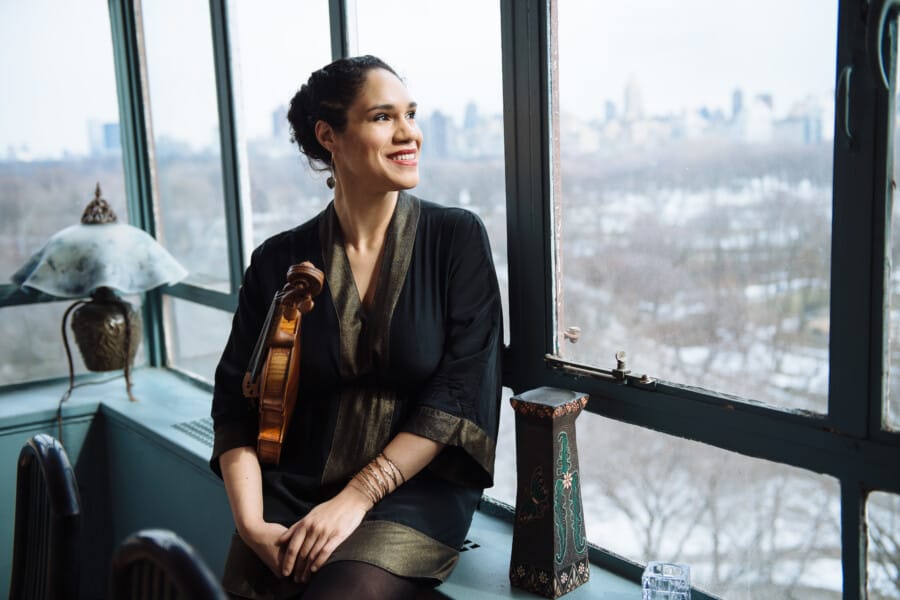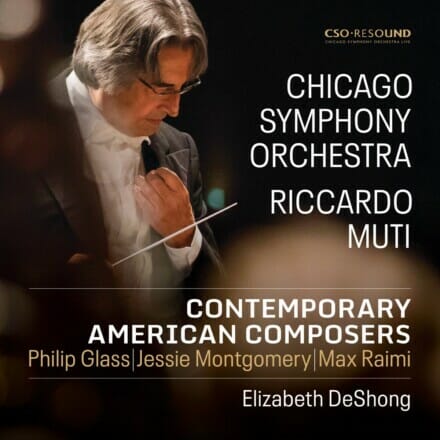Rounds for piano and string orchestra
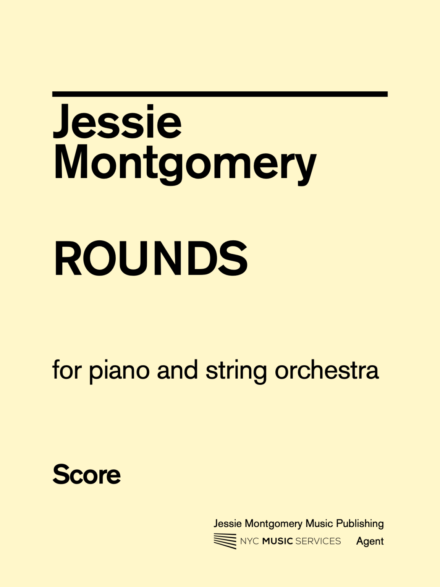
Commissioned by Art of the Piano Foundation for pianist Awadagin Pratt
Co-commissioned by Hilton Head Symphony Orchestra, Baltimore Symphony Orchestra, Colorado Symphony, Indianapolis
Symphony Orchestra, IRIS Orchestra, Kansas City Symphony, Milwaukee Symphony Orchestra, Rochester
Philharmonic Orchestra, St. Louis Symphony Orchestra
PROGRAM NOTE
Rounds for solo piano and string orchestra is inspired by the imagery and themes from T.S. Eliot’s epic poem Four Quartets. Early in the first poem, Burnt Norton, we find these evocative lines :
At the still point of the turning world. Neither flesh nor fleshless;
Neither from nor towards; at the still point, there the dance is,
But neither arrest nor movement. And do not call it fixity,
Where past and future are gathered. Neither movement from nor towards,
Neither ascent nor decline. Except for the point, the still point,
There would be no dance, and there is only the dance.
(Text © T.S. Eliot. Reproduced by courtesy of Faber and Faber Ltd)
In addition to this inspiration, while working on the piece, I became fascinated by fractals (infinite patterns found in nature that are self-similar across different scales) and also delved into the work of contemporary biologist and philosopher Andreas Weber who writes about the interdependency of all beings. Weber explores how every living organism has a rhythm that interacts and impacts with all of the living things around it and results in a multitude of outcomes.
Like Eliot in Four Quartets, beginning to understand this interconnectedness requires that we slow down, listen, and observe both the effect and the opposite effect caused by every single action and moment. I’ve found this is an exercise that lends itself very naturally towards musical gestural possibilities that I explore in the work – action and reaction, dark and light, stagnant and swift.
Structurally, with these concepts in mind, I set the form of the work as a rondo, within a rondo, within a rondo. The five major sections are a rondo; section “A” is also a rondo in itself; and the cadenza – which is partially improvised by the soloist – breaks the pattern, yet, contains within it, the overall form of the work.
To help share some of this with the performers, I’ve included the following poetic performance note at the start of the score:
Inspired by the constancy, the rhythms, and duality of life, in order of relevance to form:
Rondine – AKA Swifts (like a sparrow) flying in circles patterns
Playing with opposites – dark/light; stagnant/swift
Fractals – infinite design
I am grateful to my friend Awadagin Pratt for his collaborative spirit and ingenuity in helping to usher my first work for solo piano into the world.
— Jessie Montgomery, February 2022
Listen to Rounds on STILLPOINT, recorded by Awadagin Pratt (Piano) and A Far Cry (String Orchestra)
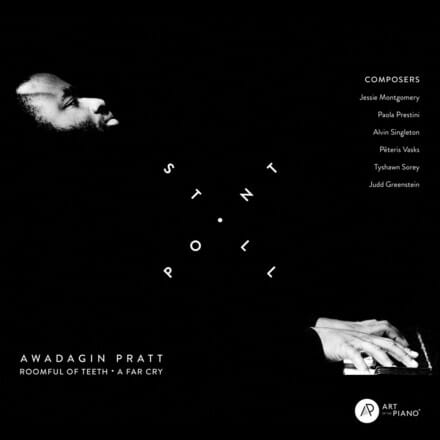
For rental inquiries and to purchase score visit Notation Central.
Hymn for Everyone for orchestra
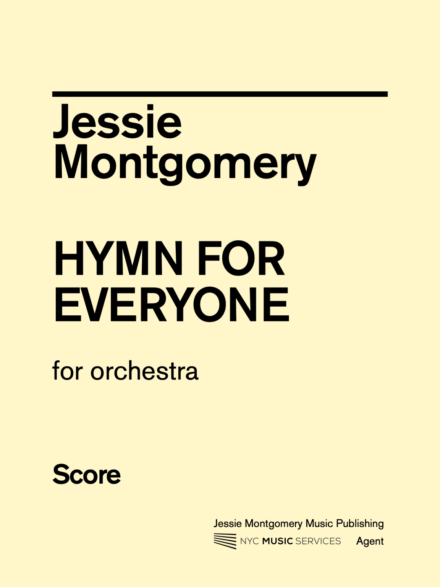
Commissioned by Riccardo Muti, Zell Music Director, Chicago Symphony Orchestra
Made possible through the generous support of Helen Zell
Co-Commissioned by the National Symphony Orchestra and the Music Academy of the West
PROGRAM NOTE:
Hymn for Everyone is based on a hymn that I wrote during the spring of 2021 that was a reflection on personal and collective challenges happening at the time. Up until that point, I had resisted composing “response pieces” to the pandemic and social-political upheaval, and had been experiencing an intense writer’s block.
But one day, after a long hike, this hymn just came to me — a rare occurrence. The melody traverses through different orchestral “choirs”, and is accompanied by the rest of the ensemble. It is a kind of meditation for orchestra, exploring various washes of color and timbre through each repetition of the melody.
— Jessie Montgomery
Listen to Hymn for Everyone on Contemporary American Composers, recorded by the Chicago Symphony Orchestra
For rental inquiries and to purchase score visit Notation Central.
Five Freedom Songs for voice, percussion, and string orchestra
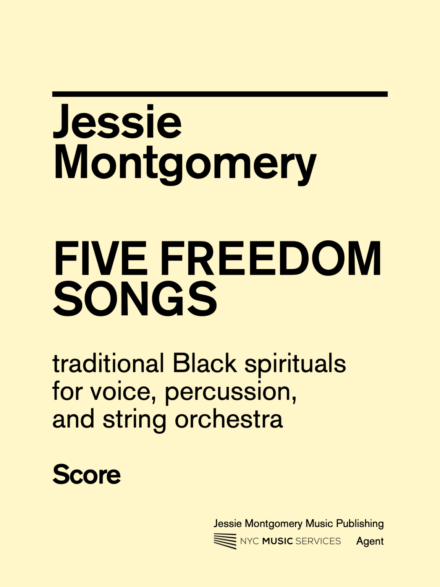
Co-commissioned by: Sun Valley Music Festival, San Francisco Symphony, Boston Symphony Orchestra; Andris Nelsons, Music Director, Grand Teton Music Festival, Kansas City Symphony, New Haven Symphony Orchestra, Virginia Arts Festival
Premiere: August 7, 2021, Sun Valley Music Festival
PROGRAM NOTE
Five Freedom Songs was conceived in collaboration with Soprano Julia Bullock between 2017-2018. We wanted to create a song cycle that honors our shared African-American heritage and the tradition of the Negro spiritual, while also experimenting with non-traditional stylistic contexts.
Each of the five songs in this cycle are sourced from the historical anthology Slave Songs of the United States (originally published by A. Simpson & Co., New York, 1867), which categorizes each song based on origin and social context.
For example, “My Lord, What a Morning” is actually the original lyric to the more popular spiritual “Stars Begin to Fall”, which also originated in the Southeastern slave states. “I Want to Go Home” also originates from the Southeastern states, and my setting is inspired by the simple way it was transcribed as a simple seven-note melody without an indicated rhythm, which inspired me to write it in a hybrid Gregorian chant/spiritual style. “Lay dis Body Down”, a funeral song said to originate from the region surrounding South Carolina, is set in an improvised style, wherein each part of the ensemble chooses their own pacing of the line to create a swirling meditation. “My Father, How Long?” contains the refrain “We will soon be free, we will soon be free, De Lord will call us home”, the words of which reflect the dual meaning between spiritual salvation and freedom from oppression. It is a song that emerged from a jail in Georgetown, S.C. at the break of the Great Rebellion, and accompanied by percussive sounds in the strings evoking the chain gang. “The Day of Judgment” originates from the region surrounding Louisiana and is set as an uneasy celebration over the refrain of a traditional West African drumming pattern.
— Jessie Montgomery
*If an orchestra wishes to perform the work before the end of the 24/25 season, they must first seek to offer the opportunity to Julia Bullock to perform it as the soloist; if she is unavailable or the orchestra is unable to engage her, then the orchestra may perform it with a soloist of their choosing. It is not a veto power over a performance, per se.
For rental inquiries and to purchase score visit Notation Central.
